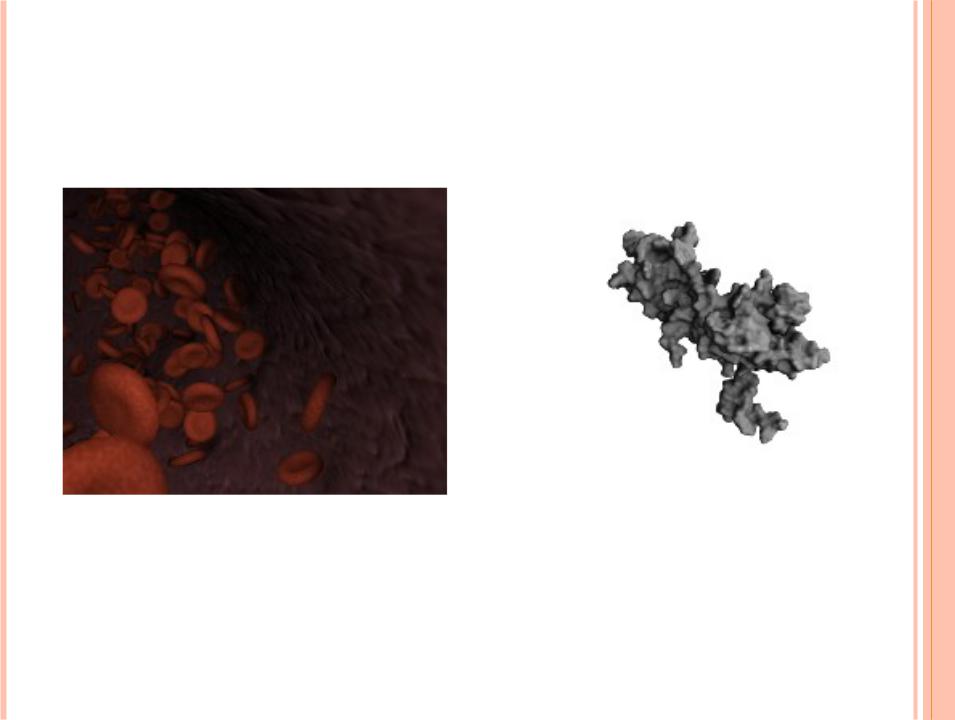
- •PROTEINS
- •All proteins functions are dependent on their structure, which, in turn, depends on
- •Proteins have traditionally being studied individually.
- •THE GENBANK® DATABASE
- •THE RCSB/PDB DATABASE
- •PROTEIN 3D STRUCTURE
- •BIOBLENDER
- •BIOBLENDER
- •VISUAL MOLECULAR DYNAMICS
- •VISUAL MOLECULAR DYNAMICS
- •JMOL
- •JMOL
- •PYMOL
- •PYMOL
- •RASMOL
- •UCSF CHIMERA
- •UCSF CHIMERA
- •FRIEND
- •FRIEND
- •VISPROT3DS
- •VISPROT3DS
- •POLYVIEW3D
- •STATISTICS OF POLYVIEW3D
- •SWISSPDBVIEWER
- •SWISSPDBVIEWER
- •OTHERS
- •THANK YOU

 LECTURE #6
LECTURE #6

PROTEINS
Proteins are molecular devices, in the nanometer scale, where biological function is exerted.
They are the building blocks of all cells in our bodies and in all living creatures of all kingdoms.
There are twenty natural amino acids, whose frequency is higher than other special ones with particular functions.
These twenty amino acids can be grouped together forming polypeptide chains, or proteins, in different ways determined by the genetic code and limited by stereochemical properties.
These proteins may have a constitutive or transient cell expression in regard to its functions.

All proteins functions are dependent on their structure, which, in turn, depends on physical and chemical parameters.
This is other important fact on studying these molecules; classical biological, physical, chemical, mathematical and informatics sciences have been working together in a new area known as bioinformatics to allow a new level of knowledge about life organization

Proteins have traditionally being studied individually.
A protein of interest had its coding sequence identified and cloned in a proper expression vector.
Hence, provided that cloning, expression and purification were successful, enough quantities of pure proteins could be employed in biochemical experiments or used to prepare solutions for NMR spectroscopy or to grow crystals for structure determination by Xray crystallography.

THE GENBANK® DATABASE
GenBank, possibly the most widely known biological primary database, contains publicly available DNA sequences for more than 205,000 different species, obtained largely through submissions from individual laboratories and batch submissions from largescale sequencing projects.
Together with the EMBL Data Library in Europe and the DNA Data Bank of Japan, they make the three most important sequence databases with daily exchange of data.

THE RCSB/PDB DATABASE
The Research Collaboratory for Structural Bioinformatics (RCSB) Protein Data Bank (PDB) provides an information web resource to biological macromolecular structures.
It includes tools and resources for understanding the relationship between sequence, structure and function of biological macromolecules.

PROTEIN 3D STRUCTURE
MODELLING
There are so many good software to visualize the protein structure.
BioBlender
Visual Molecular Dynamics
Jmol
PyMOL
RasMol
UCSF Chimera
Friend
VisProt3DS
Polyview3D
Swiss pdb viewer

BIOBLENDER
http://bioblender.eu/
BIOBLENDER CAN BE USED FOR:
Molecular Visualization (Importation and visualization of PDB files)
Molecular Dynamics Simulation (Elaborate and optimize protein motion)
Complex protein surface property visualizations (e.g. MLP and EP surface properties)

BIOBLENDER
Image showing the red blood cells flowing inside a blood vessel
HORMONE Thyroidstimulating hormone, alphabeta dimer. Its hydropathy is visualized using BioBlender visual code 

VISUAL MOLECULAR DYNAMICS
http://www.ks.uiuc.edu/Research/vmd/
can be use for modeling, visualization, and analysis of biological systems such as proteins, nucleic acids, lipid bilayer assemblies. VMD have so many other functions also beside protein structure visualization.
VMD supports computers running MacOS X, Unix, or Windows, is distributed free of charge, and includes source code.

